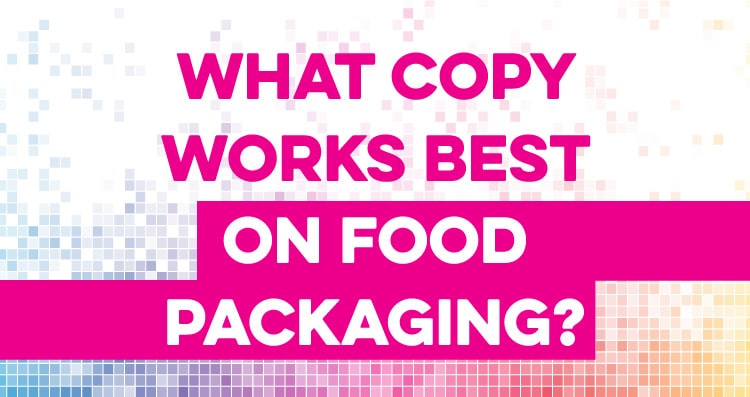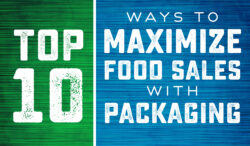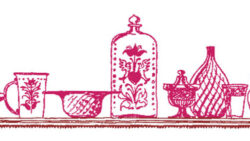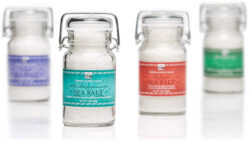Packaging design is not just about looks. The information you put on the package is equally as important. My favorite way to define design is communication through visuals and words, and this is no different for packaging design. Once the the overall appearance of the package catches the eye—an essential role—the consumer takes a closer look at the words. If a package falls short here, it can mean a lost sale. What kind of information works best on packaging? The specifics will vary depending on the individual product, but here I’ll go over some best practices to follow.
Make it clear what the product is.
This may sound obvious, but if you have a creative product name, make sure it’s clear what the product actually is. The front panel is required to bear the common name of the product, and sometimes this may be different from the product’s name. For example, if you have a jam product called Cherry Berry Joy, its statement of identity is “Jam,” so this word must appear prominently on the front panel. Not only is it required, but it’s also helpful to the consumer in quickly identifying what the product is.
List key selling points on the front panel.
The role of the front panel is to get the consumer to pick up the package and turn it over to learn more. Your product may have many points to highlight, however narrow it down to only the most essential ones for the front. You don’t want to overwhelm the consumer or detract from the key points by putting too much copy on the front. Identify which points are secondary and list those on a supporting panel.
Use lists, not paragraphs, for selling points.
The most important information should always be listed—it becomes obscured when in a paragraph. You can reinforce listed points in a paragraph, just make sure you’re not being repetitive. You can also list them in a horizontal line, separated by an icon or extra space, if that works better.
Get creative with your bullet point icons.
A list does not necessarily have to use the standard bullet point icon—get creative with other shapes. These are best when they tie in with the product or logo somehow. Check marks are also effective in conveying that the consumer is making a positive choice. Or, put the list items in boxes, circles, etc. Just make sure the points are prominent and easy to read.
Put a little descriptive copy on the front panel.
It does not have to be a full sentence and often shouldn’t be, for brevity. Use this space to highlight interesting aspects of the product that are not already in the key selling points. Between the product name and the front romance copy, the consumer should instantly understand what the product is, how it’s used and why it’s different.
Highlight signature ingredients.
Premium ingredients such as Madagascar Bourbon vanilla and pink Himalayan salt are much more highly regarded than their plainer counterparts. Calling attention to these in your descriptive copy or callouts are strong selling points. Consumers are also interested in what products don’t contain, so If you have a product with a clean ingredient list, make this known (e.g., “Made with only simple ingredients.”)
List usage suggestions, and a recipe if space.
Give innovative ideas they may not think of. For example, the jam label might say, “delicious atop cheesecake or ice cream.” These should be quick and easy ideas, and give a few of them. When you show how versatile the product is, the consumer sees it as a better value since they can do more things with it. If you have the room, also add a short recipe.
Refer to the product as your own and by its full name.
When you refer to the product in the copy, personalize it by saying “our” instead of “this,” and use the full name of the product in title case. For example, instead of saying “This raspberry jam is made with fresh berries,” say “We make our Organic Sweet & Tart Raspberry Jam with fresh berries.” This makes the product more personable and gives more character to the description. It also reinforces the product name.
Use the brand name in a recipe.
When you list a recipe on your package or anywhere else, always use the brand name and full product name. For example, instead of “2T raspberry jam,” say “2T Berry Bounty Organic Sweet & Tart Raspberry Jam.” This makes it clear that you want them to use your product instead of a competing product, while also reinforcing the brand and product names.
Cross-sell your other products.
Your package is the perfect place for listing other products in the line. It may seem superfluous when the consumer is in the store with the other products right there, but remember: the package keeps selling even after the sale is made. After they try one flavor, the package reminds them that there are more delicious flavors to discover.
Add a call to action to your website.
You definitely want to list the brand URL on the package, and it’s ideal to have this at the close of the descriptive copy and usage ideas. It’s best to include a call to action as well, referencing why they would want to go to your website. The following, or any similar phrases, are clear and concise, but you could also add your brand’s own character to how you word it:
- “See our full line of products at…”
- “See more usage ideas at…”
- “Find recipes at…”
- “Any combination of the above”
I hope you’ve found this information useful. Stay tuned for upcoming packaging copy posts on best practices for your brand story, and nutrient content claims made easy. If you have any questions or thoughts, I’d love to hear them in the comments below.





